Winsor and Newton Pigment Markers Part 1 WIP
This is going to be a long review, as I've tested these markers extensively in order to be as thorough as possible. This review includes a combination of video, text, and images, and I recently lost the original text notes with the loss of my Surface Pro 3, so I highly recommend you watch the videos for product commentary and demonstration.
As with most products reviewed on this blog, these markers were purchased out of my own pocket (except for Winsor Yellow, Azure Blue, and Winsor Red, which were demo markers that were given to me at Hands on Creativity at Pla-Za). If you enjoy this review, or found it useful, you can show that appreciation by 1. Sharing it to your social networks 2. Liking the included videos and subscribing to my YouTube channel for even more great content 3. Consider donating a little something to the Paypal link in my sidebar 4. Buy something from my online shop. Without your support, tutorials and reviews will begin disappearing from the regular roster. WITH your support, tutorials will increase, and I'll start offering monthly ArtSnacks vs SketchBox comparisons in addition to the reviews I have planned.
If you found this review, or the included videos to be useful to you in any way, please take a moment to let Winsor and Newton know! Your good word will really help my blog gain their attention, which will hopefully lead to exciting things like partnerships, early access to new supplies for review and tutorial purposes, and ideally a little recognition and signal boosting. It only takes a minute to fill out the form on their website, and it's one of the biggest ways you can help this blog continue to grow, and it's a fantastic way to show your appreciation for my years of service.
Another great way to show your support is to share this post, or ANY of my posts, to your social networks! Not only will you help me increase my audience, which may lead to sponsorships and paid blogging/review opportunities that help me pay my bills and earn a living, but you'll be helping other artists out by giving them another fantastic resource! Check the bottom of this post for my handy social network buttons, or feel free to copy and paste the link into the service of your choice!
Winsor and Newton has recently branched into the world of markers with their watercolor markers, their alcohol based, rebranded Pro and Brush markers (originally Letraset), and their innovative Pigment Markers.
When I first saw Pigment Markers on DickBlick back in October, I was incredibly excited. I've used alcohol markers for a number of years, starting with Prismacolor in highschool and progressing to Copics in graduate school, and years of reviewing alcohol markers has made me familiar with traditional dye based alcohol markers on the market. These pigment markers are just that- pigment based, rather than dye based, and should be far more archival than regular alcohol markers.
These markers are incredibly unique, but I continue to see Winsor and Newton artists promote them for characteristics that have long been the trademark of ALL alcohol based markers- alcohol base, blend-ability, vibrant colors, easy to use, easy to clean up. These markers, while alcohol markers, perform in ways unlike any alcohol based marker I've used before, and to only promote common alcohol marker traits is selling the Pigment Markers short.
I've blogged, tweeted, and YouTubed about these markers ever since I saw the pre-order on DickBlick. I've speculated, written to the company, and researched, doing my utmost to bring you the best information I can as a comic artist and illustrator. My opinions are based on years of practicing my craft as an illustrator who uses watercolor and alcohol based markers, but may be biased in favor of my craft. Your own experiences and mileage may vary. I've used Winsor and Newton watercolors for many years, and have almost always been very satisfied with what the brand has to offer.
The Brand
Winsor and Newton is a subsidiary of the parent company ColArt , which also owns Derwent, Reeves, Liquitex, Letraset, and a few other art and craft related companies. Many of my readers are probably familiar with Winsor and Newton watercolors, as they're a very popular choice for semi most pan watercolors, and are very readily available at any art supply store.
As I stated on my Promarker and Brushmarker review, Winsor and Newton has recently started branching out into markers, and if you take into consideration that the parent company also owns Liquitex, ColArts manufactors markers across the spectrum- waterbased, pigment based, alcohol based, dye based, and acrylic. You can find lots of information about Pigment Markers on the Winsor and Newton site, and you can take advantage of DickBlick's affordable prices with a Pigment Marker starter set, if you're interested in playing with this exciting new media.
Assorted Tones, 12- $47.99
Cool Grays, Set of 6- $23.99
White Blender- $4.79
Colorless Blender- $4.79
The Stats
The Markers
Since I purchased the majority of my Pigment Marker collection open stock, I thought I'd focus on the markers first, and then talk about packaging.
Winsor and Newton's new markers have been touted as having an ergonomic body by other artists, but I find my small hands tend to cramp around them. This happens with a lot of round bodied markers though, so it's probably just my small hands, and not the design of the markers. These are twin tipped markers, with one end a bullet nib and the other a chisel nib. The marker's color is indicated by one cap, and is screened on the barrel of the marker itself. The marker's color name is also listed on the barrel. In general, these markers look distinctive and stylish, especially since the rest of Winsor and Newton's markers utilize the old Promarker body, and look exactly the same.
Neither the bullet nor the chisel are particularly well made- both are compressed fiber with no nuance or give. When talking to Winsor and Newton reps, I expressed a desire to see a brush nib made available in the Pigment Markers as it's available for Brushmarkers and the Watercolor markers. One of the reps said that many artists had requested this feature, so we may have that to look forward to in the future, if these markers become popular.
The case at the top is a Utrecht marker case, but it works quite well for organizing all sorts of markers. I have several for the different brands I use around the studio.
The Packaging
I've purchased the majority of my Winsor and Newton Pigment Markers openstock through DickBlick and at Pla-Za, but I did pre-order the Skin Tones set through DickBlick. Due to a shortage of markers, the set took a couple months to ship (after the openstock markers had arrived).
My skin tones six pack came in this reusable hard plastic case. The clear plastic cap was held on with tape disks, without the disks, the cap doesn't stay on securely, making this case inappropriate for travel.
The case promises 100 years of lightfastness, as well as seven pieces (they're counting the case)
The back reads:
I think the majority of artists using these markers won't be storing their creations in normal gallery conditions. I think the best most can hope for are a couple portfolios with archival sleeves, sleeve protectors, archival boxes and cats who don't pee on their stuff.
The only way to remove the plastic band around the case and access your markers is to cut the band.
The notch on the back of the case would, in theory, allow you to chain several cases together for storage.
The skintones set includes a white blender marker, burnt umber, burnt umber light, parchment, light sienna, and portrait pink. I made a swatch on watercolor paper and taped it to the case for easy reference.
The Swatch Tests
Winsor and Newton Pigment Markers are very unique in several ways. While alcohol markers are not a new concept, these are pigment based alcohol markers, which are pretty unique.
Opacity Test (On Black Paper)
Playing around with the Pigment Markers on Strathmore Toned Tan paper led me to believe that some of these markers might be opaque, so I tested in a black paper sketchbook. The only marker with any opacity is the white blender.
As you can see, most of the Winsor and Newton Pigment Markers are not particularly opaque, with the White Blender being the exception. This pushes these markers out of the 'meant to be gouache in marker form' category I had originally hoped they'd fall in.
On Toned Tan Paper
I've mentioned in the past (and shown you guys!) how I use Strathmore Toned Tan sketchbooks to bring my sketches to life. One of the first products I played around with in these sketchbooks were Winsor and Newton's new Pigment Markers, particularly their white blender.
The white blender is a fantastic way to add opaque white to your marker sketches. I've used it here after rendering with Copics, another alcohol based marker.
Below I've used the Pigment markers in conjuction with Pitt Pens (for skin and hair) to do simple color illustrations. The Pigment markers don't blend well on this paper, but they really pop, more so than dye based alcohol markers would.
A limited range of Pigment Markers (maybe just the primaries and a white) are a perfect addition to your Toned Tan (or Toned Gray) sketchbook.
You can get your own Strathmore Toned Sketchbooks here, and help support this blog!
Toned Tan
Toned Gray
Swatches on Watercolor Paper
Colors I currently own:
White Blender
Colorless Blender
Winsor Red
Winsor Red Deep
Light Rose
Portrait Pink
Potters Pink
Henna
Royal Blue
Indigo
Blue Grey
Phtalo Teal Light
Winsor Violet
Forest Green
Sap Green
Green Gold
Winsor Yellow
Yellow Orange Light
Sepia
Warm Gray 4
Warm Gray 3
Carmine
Magenta Blue Shade
Rose
Burnt Umber
Burnt Umber Light
Parchment
Light Sienna
Flower Tests- Finding Papers that Highlight These Markers
In this video, I give a fairly comprehensive overview of the Winsor and Newton Pigment Markers, and demonstrate these markers on several commonly available papers, as the Winsor and Newton Marker paper was not yet available. This is a long video, so feel free to skip around.
Papers tested:
Yupo
Strathmore 400 series Mixed Media board
Crescent Marker Board
Rendr Marker Paper
Canson Montval Watercolor Paper
Copic PM Pad
IN GENERAL:
I found most papers remained wet after application of these markers, which is highly unusual for alcohol based markers, but this may be due to the pigment base. Many of these papers ended up abraded the combination of the pigment providing friction and the nibs providing resistance.
These markers would not blend on the majority of the papers tested (the exception being Yupo), and it was difficult to get nuanced lines or a delicate application.
Portrait Set Test
The Field Test
This field test was completed on Strathmore's Acrylic paper, as I thought the plastic surface would allow for marker blending, but would stand up to the scrubbing that these nibs create.
Testing Out the Winsor and Newton Portrait Set- Nattosoup
On Winsor and Newton Pigment Paper (Lineart)
This paper has been specially designed for use with Winsor and Newton Pigment markers. If you're interested in a review of this marker paper, please keep checking the blog, as it's in progress. Below are my thoughts on this paper as it relates to Winsor and Newton's Pigment markers only.
NOTE: This paper was sent to me by Winsor and Newton, free of charge. Thank you, Winsor and Newton, for the Pigment Marker Paper.
If you're interested in attaining your own Pigment Marker Paper, you can get it here.
Insert Video Here
I inked this test with the Sailor Mitsuo Aida brushpen, which is alcohol marker proof and water proof under most conditions. I had difficulty finding an inking pen that could handle Yupo in combination with water or alcohol marker (I figured if I could find a pen that worked on Yupo, it'd work on just about ANYTHING), so I reached for my old standby.
This paper is prone to shearing when you erase, as it's very thin, so please use caution.
I noticed that the Pigment Markers reactivated the Sailor Mitsuo Aida ink on this coated paper. This has not been an issue on other papers I've used with Mitsuo Aida brushpens and Pigment Markers, so I can only assume that despite allowing my ink to cure for more than 24 hours before marker application, the ink never really sinks in on this paper.
It was very difficult to apply color without streaks with just a bullet nib and a chisel nib as my options. Reapplication of color, which would work for other types of alcohol markers (saturation), does not eliminate all streaking, and reactivates prior layers on this paper.
Shininess indicates wetness. These markers take a really long time to dry on this paper.
It was fortunate that I'd taped my Winsor and Newton Pigment Marker Paper to a sheet of scrap cardstock, as I had to constantly clean the tips of my markers. Fortunately they're very easy to clean (just scrub on clean paper or a Viva papertowel), so your color doesn't remain contaminated.
On Winsor and Newton Pigment Paper Over Lineart
Insert Video Here
Since my Mitsuo Aida ink contaminated my Pigment Markers, I decided to do something out of character- I pulled out my lightbox and applied color on top of inks from my sketchbook.
Removing lineart from the equation made applying skintones much easier, although I had to constantly turn the lightbox off to make sure my colors were ok. If I were working with dye based alcohol markers this would only be an issue with darker colors, but although these markers aren't very opaque, they're just opaque enough that layers make it difficult to see your lineart without a lightbox.
I was a bit disappointed that the colors I applied on top of the teal- Winsor yellow, Winsor violet, magenta, did not replace the teal or sit on top of the teal.
Scan Assembled in Photoshop:
These are fun to noodle around with loosely, especially if I have easy reference to pull from, but I've sadly never really been the type to be able to doodle without some sort of drawn gameplan. I'll continue messing around with Winsor and Newton Pigment Markers, and hopefully I'll get the hang of them.
The Verdict:
As with most products reviewed on this blog, these markers were purchased out of my own pocket (except for Winsor Yellow, Azure Blue, and Winsor Red, which were demo markers that were given to me at Hands on Creativity at Pla-Za). If you enjoy this review, or found it useful, you can show that appreciation by 1. Sharing it to your social networks 2. Liking the included videos and subscribing to my YouTube channel for even more great content 3. Consider donating a little something to the Paypal link in my sidebar 4. Buy something from my online shop. Without your support, tutorials and reviews will begin disappearing from the regular roster. WITH your support, tutorials will increase, and I'll start offering monthly ArtSnacks vs SketchBox comparisons in addition to the reviews I have planned.
If you found this review, or the included videos to be useful to you in any way, please take a moment to let Winsor and Newton know! Your good word will really help my blog gain their attention, which will hopefully lead to exciting things like partnerships, early access to new supplies for review and tutorial purposes, and ideally a little recognition and signal boosting. It only takes a minute to fill out the form on their website, and it's one of the biggest ways you can help this blog continue to grow, and it's a fantastic way to show your appreciation for my years of service.
Another great way to show your support is to share this post, or ANY of my posts, to your social networks! Not only will you help me increase my audience, which may lead to sponsorships and paid blogging/review opportunities that help me pay my bills and earn a living, but you'll be helping other artists out by giving them another fantastic resource! Check the bottom of this post for my handy social network buttons, or feel free to copy and paste the link into the service of your choice!
Winsor and Newton has recently branched into the world of markers with their watercolor markers, their alcohol based, rebranded Pro and Brush markers (originally Letraset), and their innovative Pigment Markers.
When I first saw Pigment Markers on DickBlick back in October, I was incredibly excited. I've used alcohol markers for a number of years, starting with Prismacolor in highschool and progressing to Copics in graduate school, and years of reviewing alcohol markers has made me familiar with traditional dye based alcohol markers on the market. These pigment markers are just that- pigment based, rather than dye based, and should be far more archival than regular alcohol markers.
These markers are incredibly unique, but I continue to see Winsor and Newton artists promote them for characteristics that have long been the trademark of ALL alcohol based markers- alcohol base, blend-ability, vibrant colors, easy to use, easy to clean up. These markers, while alcohol markers, perform in ways unlike any alcohol based marker I've used before, and to only promote common alcohol marker traits is selling the Pigment Markers short.
I've blogged, tweeted, and YouTubed about these markers ever since I saw the pre-order on DickBlick. I've speculated, written to the company, and researched, doing my utmost to bring you the best information I can as a comic artist and illustrator. My opinions are based on years of practicing my craft as an illustrator who uses watercolor and alcohol based markers, but may be biased in favor of my craft. Your own experiences and mileage may vary. I've used Winsor and Newton watercolors for many years, and have almost always been very satisfied with what the brand has to offer.
The Brand
Winsor and Newton is a subsidiary of the parent company ColArt , which also owns Derwent, Reeves, Liquitex, Letraset, and a few other art and craft related companies. Many of my readers are probably familiar with Winsor and Newton watercolors, as they're a very popular choice for semi most pan watercolors, and are very readily available at any art supply store.
As I stated on my Promarker and Brushmarker review, Winsor and Newton has recently started branching out into markers, and if you take into consideration that the parent company also owns Liquitex, ColArts manufactors markers across the spectrum- waterbased, pigment based, alcohol based, dye based, and acrylic. You can find lots of information about Pigment Markers on the Winsor and Newton site, and you can take advantage of DickBlick's affordable prices with a Pigment Marker starter set, if you're interested in playing with this exciting new media.
Assorted Tones, 12- $47.99
Cool Grays, Set of 6- $23.99
White Blender- $4.79
Colorless Blender- $4.79
The Stats
- Pigment based (very unique among alcohol markers)
- Alcohol based
- Twin tipped- one end chisel, one end bullet
- Can be blended with water
- Archival, will not fade, promises to stay fast 100 years
- Has both colorless and white blender options
- Over 100 colors, 24 shades of gray
- $4.79 openstock on DickBlick (current best price online)
- Available openstock, in a variety of 6 piece sets, and in a 24 set
The Markers
Since I purchased the majority of my Pigment Marker collection open stock, I thought I'd focus on the markers first, and then talk about packaging.
Winsor and Newton's new markers have been touted as having an ergonomic body by other artists, but I find my small hands tend to cramp around them. This happens with a lot of round bodied markers though, so it's probably just my small hands, and not the design of the markers. These are twin tipped markers, with one end a bullet nib and the other a chisel nib. The marker's color is indicated by one cap, and is screened on the barrel of the marker itself. The marker's color name is also listed on the barrel. In general, these markers look distinctive and stylish, especially since the rest of Winsor and Newton's markers utilize the old Promarker body, and look exactly the same.
Neither the bullet nor the chisel are particularly well made- both are compressed fiber with no nuance or give. When talking to Winsor and Newton reps, I expressed a desire to see a brush nib made available in the Pigment Markers as it's available for Brushmarkers and the Watercolor markers. One of the reps said that many artists had requested this feature, so we may have that to look forward to in the future, if these markers become popular.
The case at the top is a Utrecht marker case, but it works quite well for organizing all sorts of markers. I have several for the different brands I use around the studio.
The Packaging
I've purchased the majority of my Winsor and Newton Pigment Markers openstock through DickBlick and at Pla-Za, but I did pre-order the Skin Tones set through DickBlick. Due to a shortage of markers, the set took a couple months to ship (after the openstock markers had arrived).
My skin tones six pack came in this reusable hard plastic case. The clear plastic cap was held on with tape disks, without the disks, the cap doesn't stay on securely, making this case inappropriate for travel.
The case promises 100 years of lightfastness, as well as seven pieces (they're counting the case)
The back reads:
- Advanced inks made with fine art pigments.
- Lightfast for up to 100 years in normal gallery conditions
- Made for Winsor and Newton Paper range
- Store Markers horizontally
- Made in China
I think the majority of artists using these markers won't be storing their creations in normal gallery conditions. I think the best most can hope for are a couple portfolios with archival sleeves, sleeve protectors, archival boxes and cats who don't pee on their stuff.
The only way to remove the plastic band around the case and access your markers is to cut the band.
The notch on the back of the case would, in theory, allow you to chain several cases together for storage.
The skintones set includes a white blender marker, burnt umber, burnt umber light, parchment, light sienna, and portrait pink. I made a swatch on watercolor paper and taped it to the case for easy reference.
The Swatch Tests
Winsor and Newton Pigment Markers are very unique in several ways. While alcohol markers are not a new concept, these are pigment based alcohol markers, which are pretty unique.
Opacity Test (On Black Paper)
Playing around with the Pigment Markers on Strathmore Toned Tan paper led me to believe that some of these markers might be opaque, so I tested in a black paper sketchbook. The only marker with any opacity is the white blender.
On Toned Tan Paper
I've mentioned in the past (and shown you guys!) how I use Strathmore Toned Tan sketchbooks to bring my sketches to life. One of the first products I played around with in these sketchbooks were Winsor and Newton's new Pigment Markers, particularly their white blender.
 |
| My collection of opaque white tools. |
The white blender is a fantastic way to add opaque white to your marker sketches. I've used it here after rendering with Copics, another alcohol based marker.
Below I've used the Pigment markers in conjuction with Pitt Pens (for skin and hair) to do simple color illustrations. The Pigment markers don't blend well on this paper, but they really pop, more so than dye based alcohol markers would.
A limited range of Pigment Markers (maybe just the primaries and a white) are a perfect addition to your Toned Tan (or Toned Gray) sketchbook.
You can get your own Strathmore Toned Sketchbooks here, and help support this blog!
Toned Tan
Toned Gray
Swatches on Watercolor Paper
Colors I currently own:
White Blender
Colorless Blender
Winsor Red
Winsor Red Deep
Light Rose
Portrait Pink
Potters Pink
Henna
Royal Blue
Indigo
Blue Grey
Phtalo Teal Light
Winsor Violet
Forest Green
Sap Green
Green Gold
Winsor Yellow
Yellow Orange Light
Sepia
Warm Gray 4
Warm Gray 3
Carmine
Magenta Blue Shade
Rose
Burnt Umber
Burnt Umber Light
Parchment
Light Sienna
Flower Tests- Finding Papers that Highlight These Markers
In this video, I give a fairly comprehensive overview of the Winsor and Newton Pigment Markers, and demonstrate these markers on several commonly available papers, as the Winsor and Newton Marker paper was not yet available. This is a long video, so feel free to skip around.
Papers tested:
Yupo
Strathmore 400 series Mixed Media board
Crescent Marker Board
Rendr Marker Paper
Canson Montval Watercolor Paper
Copic PM Pad
IN GENERAL:
I found most papers remained wet after application of these markers, which is highly unusual for alcohol based markers, but this may be due to the pigment base. Many of these papers ended up abraded the combination of the pigment providing friction and the nibs providing resistance.
These markers would not blend on the majority of the papers tested (the exception being Yupo), and it was difficult to get nuanced lines or a delicate application.
Portrait Set Test
The Field Test
This field test was completed on Strathmore's Acrylic paper, as I thought the plastic surface would allow for marker blending, but would stand up to the scrubbing that these nibs create.
Testing Out the Winsor and Newton Portrait Set- Nattosoup
On Winsor and Newton Pigment Paper (Lineart)
This paper has been specially designed for use with Winsor and Newton Pigment markers. If you're interested in a review of this marker paper, please keep checking the blog, as it's in progress. Below are my thoughts on this paper as it relates to Winsor and Newton's Pigment markers only.
NOTE: This paper was sent to me by Winsor and Newton, free of charge. Thank you, Winsor and Newton, for the Pigment Marker Paper.
If you're interested in attaining your own Pigment Marker Paper, you can get it here.
Insert Video Here
I inked this test with the Sailor Mitsuo Aida brushpen, which is alcohol marker proof and water proof under most conditions. I had difficulty finding an inking pen that could handle Yupo in combination with water or alcohol marker (I figured if I could find a pen that worked on Yupo, it'd work on just about ANYTHING), so I reached for my old standby.
This paper is prone to shearing when you erase, as it's very thin, so please use caution.
I noticed that the Pigment Markers reactivated the Sailor Mitsuo Aida ink on this coated paper. This has not been an issue on other papers I've used with Mitsuo Aida brushpens and Pigment Markers, so I can only assume that despite allowing my ink to cure for more than 24 hours before marker application, the ink never really sinks in on this paper.
It was very difficult to apply color without streaks with just a bullet nib and a chisel nib as my options. Reapplication of color, which would work for other types of alcohol markers (saturation), does not eliminate all streaking, and reactivates prior layers on this paper.
Shininess indicates wetness. These markers take a really long time to dry on this paper.
It was fortunate that I'd taped my Winsor and Newton Pigment Marker Paper to a sheet of scrap cardstock, as I had to constantly clean the tips of my markers. Fortunately they're very easy to clean (just scrub on clean paper or a Viva papertowel), so your color doesn't remain contaminated.
On Winsor and Newton Pigment Paper Over Lineart
Insert Video Here
Since my Mitsuo Aida ink contaminated my Pigment Markers, I decided to do something out of character- I pulled out my lightbox and applied color on top of inks from my sketchbook.
Removing lineart from the equation made applying skintones much easier, although I had to constantly turn the lightbox off to make sure my colors were ok. If I were working with dye based alcohol markers this would only be an issue with darker colors, but although these markers aren't very opaque, they're just opaque enough that layers make it difficult to see your lineart without a lightbox.
I was a bit disappointed that the colors I applied on top of the teal- Winsor yellow, Winsor violet, magenta, did not replace the teal or sit on top of the teal.
Lineless Doodling on Winsor and Newton Marker Paper
These are fun to noodle around with loosely, especially if I have easy reference to pull from, but I've sadly never really been the type to be able to doodle without some sort of drawn gameplan. I'll continue messing around with Winsor and Newton Pigment Markers, and hopefully I'll get the hang of them.
The Verdict:
I recommend waiting to purchase these markers until they've released a brush nib, as that would make using them much easier.
As an artist who is very familiar with alcohol markers, I struggled to use these markers, but my familiarity with other alcohol markers may have been the issue. Since I've already invested in a fairly large collection of Pigment Markers, I'm going to continue to try to learn how to use these markers, and share my progress here with you guys. These markers may be geared more towards painters, as that seems to be the majority of artists Winsor and Newton approached to serve as brand ambassadors.
Troubleshooting:
I tend to work very small in general, and the small pad Winsor and Newton sent (which is what I usually prefer to work on) constrained me
I prefer to work with inked lineart, and I have yet to find
I like to be very precise about color application- I may not have mixed a wide enough variety of colors
I like to use a lot of colors for blending, so I may have over rendered
As with most products reviewed on this blog, these markers were purchased out of my own pocket (except for Winsor Yellow, Azure Blue, and Winsor Red, which were demo markers that were given to me at Hands on Creativity at Pla-Za, and the Winsor and Newton marker paper, which was sent to me from Winsor and Newton). If you enjoy this review, or found it useful, you can show that appreciation by 1. Sharing it to your social networks 2. Liking the included videos and subscribing to my YouTube channel for even more great content 3. Consider donating a little something to the Paypal link in my sidebar 4. Buy something from my online shop. Without your support, tutorials and reviews will begin disappearing from the regular roster. WITH your support, tutorials will increase, and I'll start offering monthly ArtSnacks vs SketchBox comparisons in addition to the reviews I have planned.As an artist who is very familiar with alcohol markers, I struggled to use these markers, but my familiarity with other alcohol markers may have been the issue. Since I've already invested in a fairly large collection of Pigment Markers, I'm going to continue to try to learn how to use these markers, and share my progress here with you guys. These markers may be geared more towards painters, as that seems to be the majority of artists Winsor and Newton approached to serve as brand ambassadors.
Troubleshooting:
I tend to work very small in general, and the small pad Winsor and Newton sent (which is what I usually prefer to work on) constrained me
I prefer to work with inked lineart, and I have yet to find
I like to be very precise about color application- I may not have mixed a wide enough variety of colors
I like to use a lot of colors for blending, so I may have over rendered
















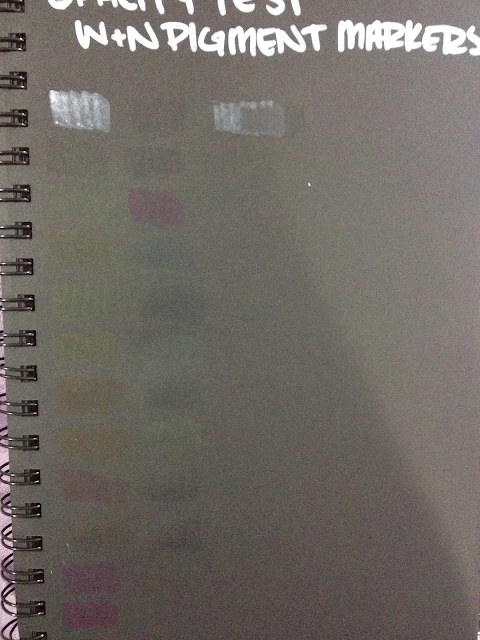























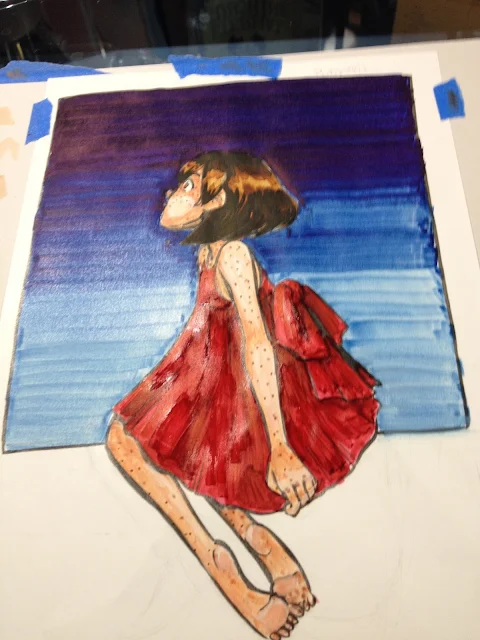

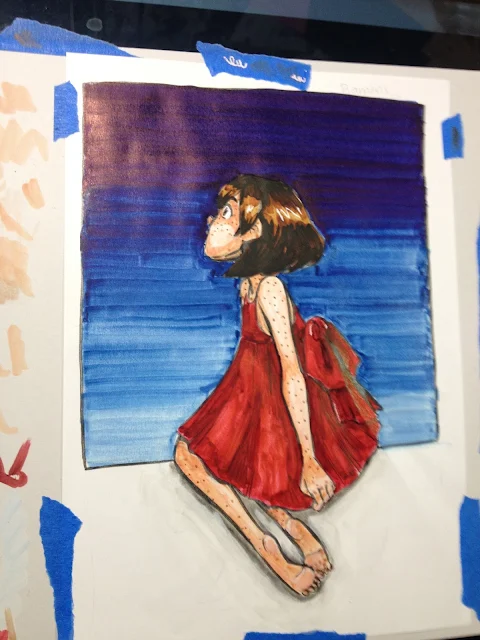

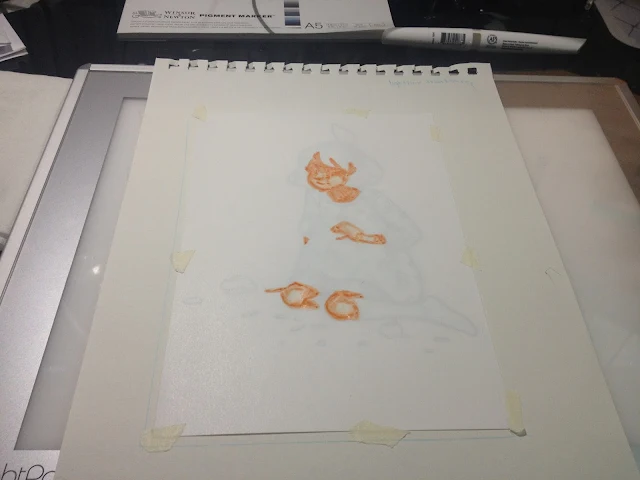
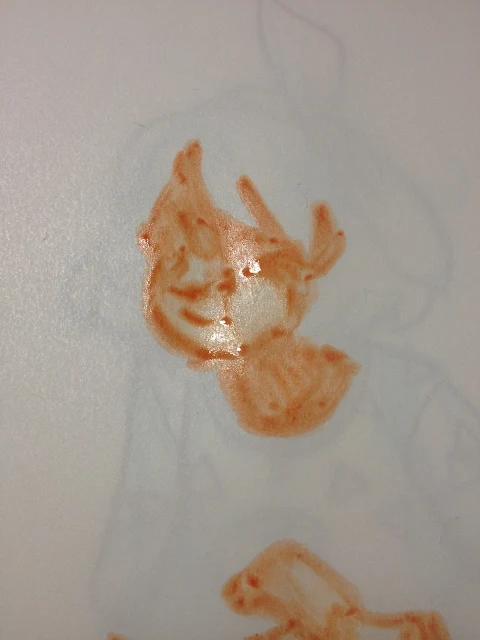


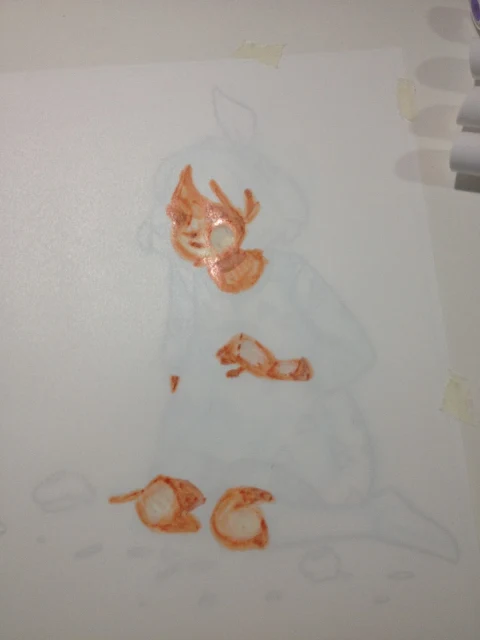
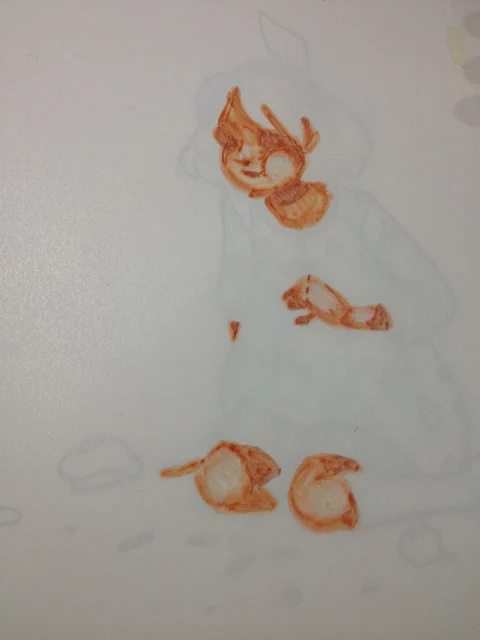







Comments
Post a Comment